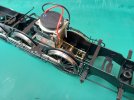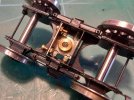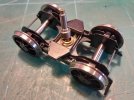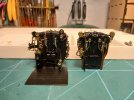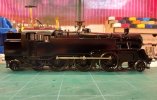richard carr
Western Thunderer
Looks great Tim, although I would have sent it to Warren to paint.
Richard
Richard
Very nice Tim very neat job on the lining !!.On the home straight now with the 4MT. Still plenty of detail to be added. I've had a delay on the chip fitting as through carelessness I managed to short it. You Choose have come to the rescue and I'm now ready to start again. The pony truck is not ye attached to the loco, just put in place for a couple of snaps. The lining and numbers are from Fox and crests are Methfix.
Tim
View attachment 140073 View attachment 140074
Looks great Tim, although I would have sent it to Warren to paint.
Richard
On the home straight now with the 4MT. Still plenty of detail to be added. I've had a delay on the chip fitting as through carelessness I managed to short it. You Choose have come to the rescue and I'm now ready to start again. The pony truck is not ye attached to the loco, just put in place for a couple of snaps. The lining and numbers are from Fox and crests are Methfix.
Tim
View attachment 140073 View attachment 140074

Nice job Tim.Superb job Tim
Col.
On the home straight now with the 4MT. Still plenty of detail to be added. I've had a delay on the chip fitting as through carelessness I managed to short it. You Choose have come to the rescue and I'm now ready to start again. The pony truck is not ye attached to the loco, just put in place for a couple of snaps. The lining and numbers are from Fox and crests are Methfix.
Tim.
Three years plus later and we have found a similar situation with Peter's 4MT. Forewarned, we have changed the assembly sequence in so far that the cylinders and motion brackets are attached temporarily to the frame plates without slidebars. Visually the motion brackets are at different angles to each other. Dave Sharp (proprietor of Modern Outline Kits) has checked his CAD drawings and advised that, on the prototype, the motion brackets are parallel to the rear face of the cylinder block. I bent and adjusted the location of each bracket until (a) the bracket is straight and (b) the distance between bracket and block at the top of the bracket was the same as the distance when measured at the bottom of the bracket.Thanks to Richard for the heads up on the slide bar support and to Dave and Mike for their input. Having looked at it in the flesh, the support was at the wrong angle. There was also a slight bend at the upper slide bar, towards the front which added to the miss aligned appearance.
Time to resurrect another dormant thread, but first an apology to @Dogstar for my lack of reply to his question regarding pick ups. My apologies Graham, I'd not been on the forum for a while when you posed your question so I missed it until now.Peter (@P A D),
This post is addressed to Peter, others who have built the kit are welcome to contribute (possibly @farnetti, @Mudhen) .
I am considering how to collect power from the wheels, current liking is the plunger pickup from Slaters. How have you arranged for power pick-up? Which product? If Slater's plungers then where are those parts located?
thank you, Graham
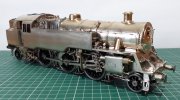
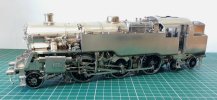
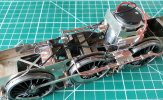
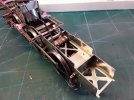
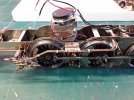
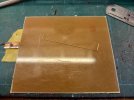
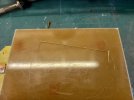
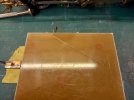
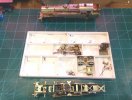
Hi Peter,
do you not run the risk of the wheel rim acting as a blade and cutting through the wire and if so, will you just re-bend the wire to rub on the wheel tread as and when needed?
A great build and looking forward to seeing the finished loco
regards
Mike
What a superb job and in my opinion the prettiest tank loco built
I've been fitting them to models for a few years and Richard will have more mileage I'm sure, the PB is a tough ole metal so it'll take some time before it wears through and as Peter notes, easy enough to change.Mike,
Thank you. I believe it was @Dikitriki (or could have been @mickoo) who suggested it to me and I posed the same question. Richard Lambert told me that after using this method with extensive running on a large layout, there had been no problems. The edge of the flange will be polished very smooth at final assembly. The advantage of this is it keeps the wiper where it should be and is less prone to picking up crud from the track. Also, if they ever do fail, it will be easy enough to replace.
Thank you Steve. I'm teetering between this and the Stanier 3P when fitted with separate dome and top feed as the best looking tank loco. Each to his own though.
Cheers,
Peter
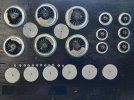
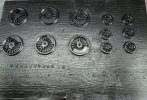
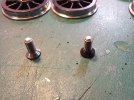
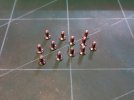
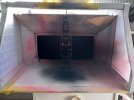
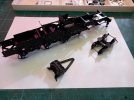
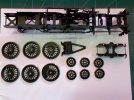
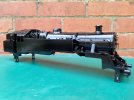
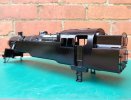
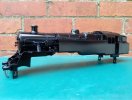
 By rights the shell wing mirrors should be covered in a shroud, but I dont like them that way so I left them off.
By rights the shell wing mirrors should be covered in a shroud, but I dont like them that way so I left them off.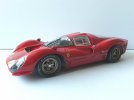
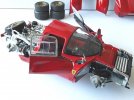
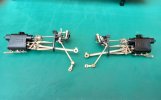
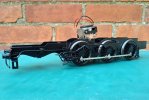
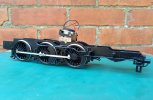
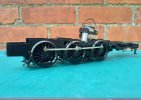
 I've since corrected it but need to touch up the paint on the spacer. The pick ups are back on as well but I overlooked to take a photo.
I've since corrected it but need to touch up the paint on the spacer. The pick ups are back on as well but I overlooked to take a photo.